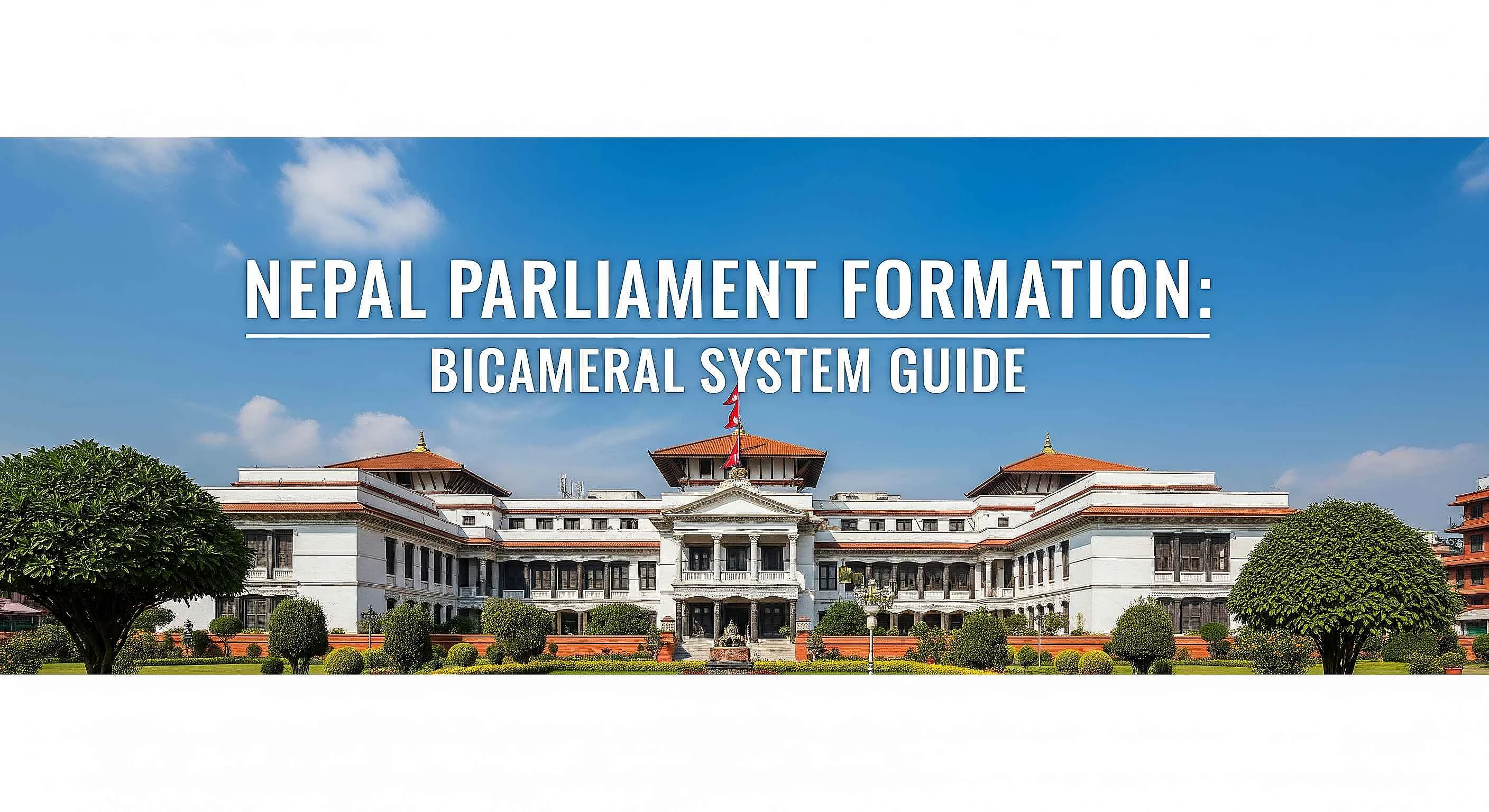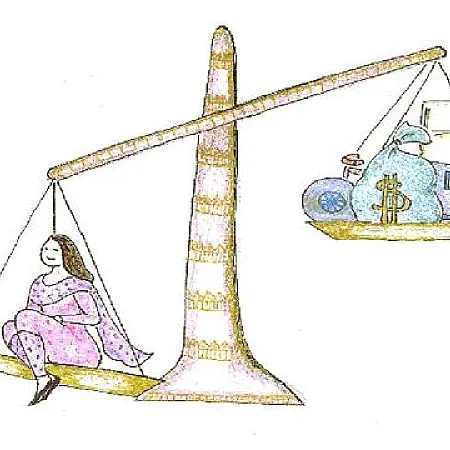Introduction
Nepal's parliament formation represents a cornerstone of the country's federal democratic republic, establishing a robust bicameral legislature that serves over 30 million citizens. The current Nepal political system, governed by the Constitution of 2015, creates a comprehensive framework for parliamentary democracy through its unique bicameral structure comprising the House of Representatives and National Assembly.
Understanding Nepal parliament formation is essential for students of political science, international observers, and Nepali citizens seeking to comprehend their governance system. This guide explores the intricate process from electoral systems to government formation within Nepal's federal democratic republic structure.
Constitutional Framework of Nepal's Parliament
The Constitution of Nepal 2015 establishes a Federal Parliament consisting of two Houses: the House of Representatives and the National Assembly. This bicameral legislature forms the legislative backbone of Nepal's federal democratic republic, replacing earlier parliamentary systems with a more inclusive and representative structure.
The constitutional assembly process that created this framework emphasized democratic participation and federal representation. The Nepal political system now operates under clear constitutional provisions that define parliamentary powers, electoral processes, and government formation procedures.
Key Constitutional Provisions
The constitution mandates specific requirements for parliament formation:
- Bicameral Structure: Two distinct houses with complementary functions
- Federal Representation: Integration of provincial and national interests
- Inclusive Participation: 33% reservation for women in all public offices including the federal parliament
- Democratic Legitimacy: Direct and indirect electoral systems ensuring broad representation
House of Representatives: The Lower House
The House of Representatives consists of 275 members, making it the larger chamber of Nepal's bicameral legislature. This lower house serves as the primary democratic institution where parliamentary formation begins through direct electoral processes.
Electoral System for House of Representatives
The electoral system combines two methods to ensure comprehensive representation:
First-Past-the-Post System (FPTP):
- 165 members elected from single-member constituencies
- Direct voting by citizens in each electoral district
- Winner determined by plurality of votes
Proportional Representation System (PR):
- 110 members elected through party lists
- Ensures representation for smaller parties and marginalized groups
- Promotes inclusive parliamentary democracy
Parliamentary Formation Process
After House of Representatives elections, parliamentary formation follows these steps:
- Electoral Results Certification: Election Commission validates results
- Party Strength Assessment: Determining majority or coalition requirements
- Coalition Negotiations: Parties engage in alliance building if needed
- Prime Minister Selection: Parliament elects the head of government
- Cabinet Formation: Prime minister forms council of ministers
National Assembly: The Upper House
The National Assembly comprises 59 members: 8 members elected from each of the seven provinces by electoral college, and three appointed by the President on recommendation of the government. This upper house provides federal balance and represents provincial interests in Nepal's parliament formation.
Electoral College System
The National Assembly employs an indirect electoral system through provincial electoral colleges:
Electoral College Composition:
- Provincial assembly members
- Local government representatives (mayors, chairpersons)
- House of Representatives members from the province
Term Structure: Members serve staggered six-year terms with one-third expiring every two years, ensuring continuity in the upper house while allowing regular renewal.
Federal Representation
Each province elects eight National Assembly members, ensuring equal provincial representation regardless of population size. This system balances federal democratic principles with provincial autonomy, crucial for Nepal's diverse geographical and cultural landscape.
Political Parties and Coalition Building
Political parties form the foundation of Nepal parliament formation, organizing electoral competition and government formation. The Nepal political system accommodates multiple parties through proportional representation and coalition-building mechanisms.
Major Political Forces
Nepal's parliamentary democracy features several significant political parties:
- Nepal Communist Party (Unified Marxist–Leninist)
- Nepali Congress
- CPN (Maoist Centre)
- Rastriya Swatantra Party
- Regional and ethnic parties representing specific communities
Coalition Government Formation
Given Nepal's multi-party landscape, coalition governments frequently emerge from parliament formation processes. Coalition building involves:
Pre-Electoral Alliances:
- Parties form electoral coalitions before elections
- Seat-sharing arrangements in constituencies
- Common minimum programs for governance
Post-Electoral Negotiations:
- Coalition formation based on parliamentary arithmetic
- Ministerial portfolio distribution
- Policy agreement negotiations
Government Formation Process
The transition from elections to functioning government involves several constitutional steps within Nepal's parliamentary democracy framework.
Prime Minister Selection
The constitution establishes clear procedures for prime minister selection:
- Majority Claim: Party or coalition with House of Representatives majority stakes claim
- Presidential Invitation: President invites majority leader to form government
- Confidence Vote: Prime minister must prove majority support in parliament
- Cabinet Formation: Council of ministers appointed following parliamentary approval
Vote of Confidence Mechanism
Nepal's parliamentary system requires ongoing parliamentary confidence:
- Initial Confidence Vote: New prime minister must win confidence within 30 days
- No-Confidence Motions: Opposition can challenge government through parliamentary procedures
- Government Stability: Ensures executive accountability to bicameral legislature
Federal Structure and Parliament
Nepal's federal democratic republic integrates three levels of government, with the federal parliament serving as the apex legislative institution. This structure influences parliamentary formation through federal representation requirements.
Provincial Integration
The bicameral legislature ensures provincial voices in national policymaking:
Provincial Assembly Linkage:
- Provincial assembly members participate in National Assembly elections
- Federal-provincial coordination through parliamentary mechanisms
- Integrated approach to legislation affecting multiple government levels
Federal Balance: The Nepal political system balances federal unity with provincial autonomy through parliamentary representation, ensuring diverse regional interests influence national governance.
Electoral Management and Institutions
Successful Nepal parliament formation depends on robust electoral institutions that manage the complex bicameral electoral system.
Election Commission Role
The Election Commission of Nepal oversees all parliamentary elections:
- Electoral Administration: Managing House of Representatives and National Assembly elections
- Voter Registration: Maintaining comprehensive electoral rolls
- Results Certification: Validating electoral outcomes for parliamentary formation
Judicial Oversight
The judiciary ensures constitutional compliance in parliamentary formation:
- Electoral Disputes: Supreme Court resolves parliamentary election challenges
- Constitutional Interpretation: Clarifying ambiguous constitutional provisions
- Democratic Legitimacy: Upholding rule of law in electoral processes
Challenges in Parliamentary Formation
Despite constitutional provisions, Nepal parliament formation faces several challenges affecting democratic governance.
Political Instability
Frequent government changes have characterized Nepal's parliamentary democracy:
- Coalition Instability: Multi-party coalitions often prove fragile
- Leadership Disputes: Internal party conflicts affecting government formation
- Policy Continuity: Challenges in maintaining consistent governance approaches
Institutional Development
Strengthening parliamentary institutions remains ongoing:
- Committee Effectiveness: Sixteen thematic committees operate across both houses
- Legislative Capacity: Building expertise for effective lawmaking
- Democratic Culture: Developing parliamentary traditions and practices
International Context and Comparative Perspective
Nepal's bicameral legislature reflects global democratic trends while addressing specific national circumstances.
Regional Comparison
Nepal's parliamentary system shares features with South Asian democracies while maintaining unique characteristics:
- Federal Structure: Similar to India's bicameralism but adapted for Nepal's size
- Proportional Representation: Ensuring inclusive democracy in diverse society
- Presidential System Elements: Balanced with parliamentary democracy principles
Democratic Transition
The current Nepal political system represents significant democratic progress:
- Constitutional Assembly Process: Democratic constitution-making through elected representatives
- Peaceful Transitions: Establishing norms for democratic government changes
- Inclusive Representation: Expanding political participation across social groups
Future of Nepal's Parliamentary System
Nepal parliament formation continues evolving as democratic institutions mature and adapt to changing political dynamics.
Institutional Strengthening
Key areas for parliamentary development include:
Legislative Effectiveness:
- Improving lawmaking processes and procedures
- Strengthening committee systems for detailed policy work
- Enhancing parliamentary oversight of executive actions
Democratic Representation:
- Ensuring effective representation of marginalized communities
- Balancing federal and provincial interests in national legislation
- Promoting women's participation in parliamentary leadership
System Stability
Long-term stability of Nepal's parliamentary democracy depends on:
- Political Consensus: Building agreement on fundamental democratic principles
- Institutional Respect: Strengthening commitment to constitutional processes
- Citizen Engagement: Maintaining public support for democratic governance
Conclusion
Nepal parliament formation through its bicameral legislature represents a sophisticated democratic system balancing representation, federalism, and inclusive governance. The combination of directly elected House of Representatives and federally representative National Assembly creates a comprehensive framework for parliamentary democracy.
Understanding this system proves essential for anyone engaging with Nepal's federal democratic republic, whether as students, citizens, or international observers. The ongoing evolution of Nepal's parliamentary system demonstrates both the challenges and opportunities inherent in democratic institution-building.
The success of Nepal parliament formation ultimately depends on continued commitment to constitutional principles, democratic norms, and inclusive representation. As Nepal's bicameral legislature matures, it serves as a vital foundation for the country's democratic future and federal governance.
Through effective parliamentary formation, Nepal continues building a robust democracy that serves its diverse population while maintaining stability and legitimate governance in a federal democratic republic framework.





-thumb.webp)
-thumb.webp)



